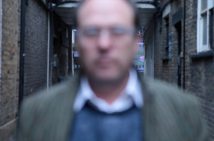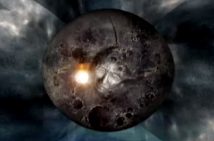Submarine Channel

“No cameras were harmed during production”: 5 films done without a camera
Top5's
“No cameras were harmed during production”: 5 films done without a camera
Cinema was invented over a hundred years ago and certainly, a lot of water has flowed under the bridge. But of all the techniques and trends we’ve seen come and go, the most peculiar one is the very antithesis of the art itself: films made without a camera.
By Benjamin Pineros
Ever since the genesis of cinema, there has been a curiosity to explore the possibilities of the art form beyond the realm of narrative structure. William K.L. Dickson’s Annabelle Serpentine Dance from 1895 depicts American broadway actress Annabelle Moore performing vividly as she flows and creates kinetic patterns with her skirt. Each frame was hand-tinted in violets, yellows, and oranges, giving to her movements this mesmerizing, dreamlike illusion.
The short — which in reality was a series of shorts — lacks any sense of narrative, and it’s not quite fiction, nor documentary in nature. Its appeal lies in its plasticity and visual beauty rather than in the tradition of storytelling. It becomes the unintentional precursor of what two decades afterward will conform to a new branch of cinema, the experimental or avant-garde film pioneered by artists like René Clair and Walter Ruttmann.
Of all experimental techniques and appropriation of new technology we’ve seen throughout history, one cannot find a more extreme and subversive example of abstraction than the “cameraless” film.
If we strip down film form to its most primitive concept, we could argue that cinema is nothing more than light and sound. Just as a painter has the spectrum of colors at his disposal, and a myriad of brushes to apply them, filmmakers in the most basic sense just have a camera and a sound recorder to render moving pictures. But what happens if you take away the camera? Is it still cinema?
1) La Jetée (1962)
French artist Chris Marker did in 1962 probably one of the weirdest films to ever end up in a mainstream TV show in the US. This sci-fi featurette is set in a post-apocalyptic future after the globe has been devastated by World War III. Amidst this grim scenario, a group of scientists is developing time travel in the hopes of altering the past and future to fix their present timeline. The movie is made of voice-over narration and a musical score over black & white still photographs. It’s intricate plot and ingenious time-travel mechanics inspired both Terry Gilliam’s 1995 science fiction film 12 Monkeys and the 12 Monkeys television series aired on Syfy in 2015.
2) Blue (1993)
During his career, English artist Derek Jarman mostly sailed through the waters of independent and underground cinema, although he grazed the mainstream with films like Caravaggio and several music videos for The Smiths, Pet Shop Boys, and Bryan Ferry.
Blue is his twelfth and final feature film, released four months before his death from AIDS-related complications. During the time of the film’s production, Jarman’s illness had rendered him partially blind, being able only to see in shades of blue.
The film consists of the entire frame filled by a saturated blue color accompanied by a soundtrack of some of Jarman’s long-time collaborators reciting half true, half surreal recollections of his life and career.
3) Mothlight (1963)
Stan Brakhage’s work stretched the definitions of film form probably as no other author has done before or since. His films are the complete opposite of a narrative experience, something closer to a dream or a drug-induced state. To achieve his painterly, surreal images he used countless unorthodox techniques like hand scratching celluloid strips frame by frame, puncturing holes through them, using pre-existing footage to make ghostly superimpositions, ingenious in-camera effects, and crazy post-chemical postprocessing.
To produce Mothlight, Brakhage collected flower petals, leaves, moth wings, and other detritus and “sandwiched” them between two strips of 16mm splicing tape. The unusual collage was then contact-printed at a lab for it to be able to be projected and copied.
“Here is a film that I made out of a deep grief. The grief is my business in a way, but the grief was helpful in squeezing the little film out of me, that I said ‘these crazy moths are flying into the candlelight, and burning themselves to death, and that’s what’s happening to me,’” said the filmmaker in his commentary track on the Criterion Collection DVD By Brakhage: An Anthology, Volume 1, “I don’t have enough money to make these films, and … I’m not feeding my children properly, because of these damn films, you know. And I’m burning up here … What can I do?” I’m feeling the full horror of some kind of immolation, in a way.”
4) A Boy and His Atom (2013)
Now I promise, if you still have at least a pinch left of that wondrous capacity of amazement we had when we were kids, this film will absolutely blow your mind.
These days the Internet generates more than 2 quintillion bytes of data each day, — that’s a 2 followed by 18 zeros! — have you ever thought about how on Earth are we going to store all our accumulated trash in the future? As our data creation and consumption becomes bigger, we need to find smaller physical units to be able to store such an insane amount of information.
IBM’s atomic research team is exploring the possibilities of storing data at an atomic scale, which will be the most sustainable and efficient path to solving all our storage needs in the future. In 2012, the company announced they had found a way to store a single bit of data on 12 atoms, and to promote their insane achievement they decided to show off their atom slaying skills by creating a film entirely made by moving carbon monoxide molecules. Yup, this is the smallest set in the history of cinema.
A Boy and His Atom was made with two scanning tunneling microscopes and 5000 atoms, and the final product renders our little atom movie set magnified about 100 million times. The movie shows a boy playing with a wayward atom for one minute.
5) What’s Up, Tiger Lily? (1966)
Ok, this might be a bit cheating but it’s worth it because it’s the most hilarious movie on the list. Did you know that Woody Allen didn’t shoot a single frame for his feature-length directorial debut?
The iconic filmmaker took a Japanese action film titled International Secret Police: Key of Keys, re-edited it and overdubbed it with dialogue diametrically opposed to that of the original film. While the original movie deals with Bond-type spy infiltrating a dangerous anti-government guerrilla to steal a large amount of money, Allen’s film is about the misadventures of a secret agent in search of the world’s best egg salad recipe.
Benjamin is a writer, self-taught filmmaker, 3D artist and cook extraordinaire. He has worked in feature animated films, indie video games and is currently a contributor to Australian digital publishing company Conversant Media. In love with all good sounds from Bach to David Bowie, he writes first drafts on paper, hates smartphones and wants to learn to play the guitar someday. For years, Benjamin has worked in his spare time on his personal project “Servicios Públicos” a sci-fi dystopia about tyrant states, overpopulated Latin American cities and some damn awesome robots. Find him on Twitter @iampineros


